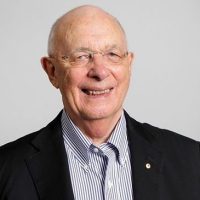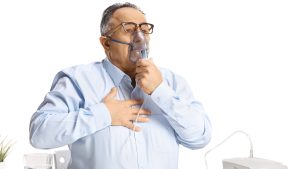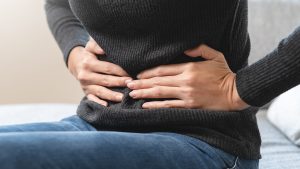Articles / Brighter days and darker nights – A prescription for improved mental health?

There’s a complex relationship between poor sleep, circadian rhythm and various mental health conditions, but could something as simple as more light exposure during the day and less at night be an effective treatment?
A new study in Nature Mental Health suggests it could be. It tested two hypotheses based on the known effects of day and night-time light exposure on the circadian system as well as the well-established links between circadian disruption and psychiatric disorders.
These were: 1. greater day-time light exposure is associated with lower risk for psychiatric disorders and better mood and 2. greater light exposure at night is associated with higher risk for psychiatric disorders and poorer mood.
The authors conducted a cross-sectional study involving more than 86,000 UK BioBank participants who wore a wrist device to measure their light exposure (in lux) over a seven-day period. Afterwards – an average 1.86 years later – they were asked to answer a mental health questionnaire (MHQ) and some 61,466 or 70.8% complied.
The authors then compared the data sets taking into account other factors such as shift work, psychiatric diagnoses, sleep duration and efficiency, urbanicity and cardiometabolic health as well as other confounding variables including age, sex, ethnicity, photoperiod, employment and physical activity levels.
After running sensitivity tests the authors reported that exposure to brighter light at night was associated with a greater risk of:
- major depressive disorder
- self-harm behaviour
- post-traumatic stress disorder
- psychosis
- generalised anxiety disorder
- bipolar disorder, and,
- poorer self-reported mood and wellbeing
By contrast, brighter light in the day was associated with lower odds of major depressive disorder, self-harm behaviour, PTSD, and psychosis, as well as better self-reported mood and wellbeing, they said.
And the dose of day or night time light exposure mattered too.
“For individuals in the brightest night-time light quartile, we observed ~30% higher risk of major depressive disorder and self-harm, while individuals in the brightest daytime light quartile had ~20% lower risk of major depressive disorder and self-harm.”
Similarly, bright night-time light exposure was associated with ~20% increased risk for psychosis, while bright daytime light exposure was associated with ~30% reduced risk.
“While a ~20% higher risk for generalised anxiety disorder was observed among those in the highest quartile of night-time light exposure, the benefits of daytime light exposure was not so clear, but they reported “an adverse association of night-time light exposure and a beneficial association of daytime light exposure with PTSD risk and symptom severity,” they said.
Based on this, they concluded that there is a dose-response relationship to light exposure and that “light-exposure interventions may act in a transdiagnostic manner to improve mental health by strengthening circadian rhythms.”
Their recommendation: “Brighter days and darker nights may be a simple, freely available, non-pharmacological intervention to enhance mental health that is easily implementable in a community setting,” they stated.
Dr Jamie Zeitzer, from the Department of Psychiatry and Behavioral Sciences, Stanford University, isn’t convinced.
“To draw such an inference, one must assume a degree of causality between daytime and nighttime light exposure and mental health outcomes,” he wrote in an accompanying commentary article.
While he conceded that “mistimed light may still have a crucial role in exacerbating or reinforcing poor mental health,” Zeitzer noted various limitations in the study including the reliability of the light measurement devices.
“Given the combination of the limitations of the device and recording methods, as well as the physiological theory being posited, more work is needed to further resolve the dose–response relationship between light at night and mental health,” he said.
Instead, he offered an alternative interpretation, noting it’s plausible that inverse causality could be true as “poorer mental health leads to disruption of sleep or sleep schedules (meaning more light at night while awake) and reduced outdoor behaviours (less light during the day).”
“Expanding these findings will require interventional studies to more closely determine how exposure to environmental lighting can be harnessed to improve mental health.”
In today’s modern world, where we spend ~90% of the day indoors under relatively dim electric lighting, but our evenings are spent in a much brighter environment than our ancestors grew up with, this approach may provide some vital answers.
In the meantime, the question remains: could simple sleep hygiene advice provide patients with a tool to help mitigate psychiatric disorders? There’s no harm in trying.
Independent comment from Emeritus Professor and Consultant Psychiatrist Philip Boyce
“From an evolutionary perspective, humans would have high light exposure during day time and low light exposure during nighttime.
In our industrialised society, we are exposed to brighter light during night time (artificial lighting) and for those involved in indoor work lower day time light exposure.
This risks circadian rhythms becoming destabilised or out of sync, as light is one of the key zeitgebers (time setter), through its effect on the suprachiasmatic nuclei and melatonin production.
Mood disorders have been shown to be affected by circadian rhythm disruption, and bright light therapy has been used to treat depression.
In this study, they found that greater night time exposure to light was associated with increased risk of major depression, generalised anxiety disorder, PTSD, psychosis, bipolar disorder and self-harm. By contrast, brighter day time exposure was associated with reduced risk for major depression, PTSD, psychosis and self-harm and improved wellbeing.
The PTSD finding is novel, however, the authors note that there is some evidence that PTSD is associated with circadian rhythm disturbance.
These findings underscore the importance of lifestyle modification in the common mental disorders, especially the importance of maintaining stable circadian rhythms, or a stable sleep/wake cycle. Wellbeing is improved by exposure to day time light (perhaps accompanied by exercise). It also emphasises the importance of not exposing to bright light at night and not exposing to ‘screens’ such as computers, tablets or phones (blue light is more effective in suppressing melatonin).
These findings may, in part, explain the high rates of psychological distress during the COVID lockdowns, when people were unable to expose themselves to day time light as there were confined home.”
Sydney University psychiatry professor Philip Boyce, who is also an Emeritus Consultant Psychiatrist at Westmead Hospital, has published extensively on circadian rhythms and mental health.

Managing Prostate Cancer Treatment Update

RSV, Respiratory Viral Infections and the Heart – Exert Panel

Thyroid Disease in Pregnancy


Strongly support
Somewhat support
Neither support nor oppose
Somewhat oppose
Strongly oppose
Listen to expert interviews.
Click to open in a new tab
Browse the latest articles from Healthed.
You have completed the Educational Activities (EA) component of this activity.
Select ‘Confirm & claim CPD‘ to confirm you have engaged with this activity in its entirety and claim your CPD.
You will be taken to explore further CPD learning available to you.